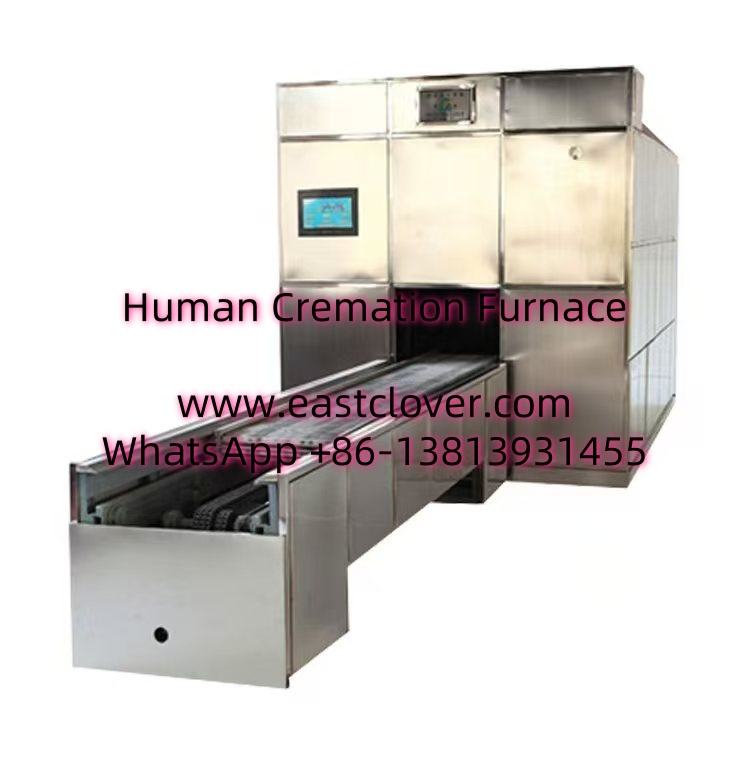Introduction
Pandemics, such as COVID-19, Ebola, and influenza outbreaks, present unprecedented challenges to public health systems, particularly in managing mass fatalities. Traditional burial and cremation infrastructures are often overwhelmed during such crises, leading to delays, public health risks, and emotional distress for affected communities. In response, portable container incinerators have emerged as a critical solution for safe, efficient, and dignified handling of human remains during emergencies. This news explores the design, functionality, and ethical considerations of these systems, alongside their role in mitigating large-scale fatality management challenges.
Portable Container Incinerators: Design and Functionality
Portable container incinerators are compact, mobile units designed to safely cremate human remains. Their modular structure allows rapid deployment to disaster zones, refugee camps, or urban centers with overwhelmed facilities. Key features include:
- Mobility: Mounted on trailers or shipping containers for easy transport.
- High-Temperature Combustion: Operate at 800–1,000°C to ensure complete decomposition of organic matter and pathogens.
- Emission Controls: Equipped with filters and scrubbers to minimize air pollution and comply with environmental regulations.
- Fuel Efficiency: Use diesel, propane, or electricity, with some models supporting dual-fuel systems.
These systems are designed for rapid assembly, often requiring minimal infrastructure, and can process multiple bodies per day depending on size and configuration. Advanced models integrate IoT sensors for real-time monitoring of temperature, emissions, and operational efficiency.
Role in Pandemic Response
Surge Capacity
During peak pandemic phases, conventional crematoriums and morgues face capacity shortages. Portable units supplement existing infrastructure, preventing bottlenecks and ensuring timely remains management. For example, during India’s COVID-19 Delta wave, states like Delhi deployed mobile incinerators to manage over 4,000 daily deaths.
Infection Control
High-risk pathogens like Ebola or novel coronaviruses require immediate containment. Incineration eliminates biohazards, reducing transmission risks for healthcare workers and communities. The World Health Organization (WHO) recommends cremation for highly contagious diseases when safe burial is impractical.
Decentralization
In rural or resource-limited regions, centralized facilities may be inaccessible. Mobile units bring cremation services closer to affected populations, respecting cultural practices while adhering to safety protocols.
Adaptability
These systems cater to diverse needs, from individual cremations to mass fatality events. Modular designs allow customization for religious or cultural requirements, such as separate chambers for ceremonial practices.
Case Studies
COVID-19 Pandemic: New York City utilized mobile cremation units in 2020 to manage overflow from overwhelmed funeral homes. Similarly, Iran deployed container-based systems to address burial site shortages.
Ebola Outbreaks: In West Africa (2014–2016), portable incinerators were critical in safely disposing of 70% of Ebola victims, significantly curbing disease spread.
Challenges and Ethical Considerations
- Environmental Concerns: Despite emission controls, communities may oppose incinerators due to air quality fears. Transparent communication and compliance with standards like EPA Guidelines are essential.
- Cultural Sensitivities: Certain religions or cultures mandate burial. Solutions require collaboration with local leaders to balance safety and tradition.
- Cost and Logistics: Procurement, fuel, and maintenance costs can strain budgets. Governments must pre-plan financing and supply chains for emergency readiness.
Future Outlook
Advancements in clean combustion technology, AI-driven efficiency optimization, and hybrid renewable energy integration (e.g., solar-assisted systems) promise greener and more scalable solutions. Global health agencies advocate for pre-positioning mobile units in pandemic preparedness plans.
www.southclover.com
Portable container incinerators represent a vital tool in modern pandemic response, offering flexibility, safety, and dignity in mass fatality management. While challenges persist, technological innovation and cross-sector collaboration can address environmental and ethical concerns, ensuring these systems remain a cornerstone of global health resilience.
Frequently Asked Questions (FAQs)
How do portable incinerators differ from traditional crematoriums?
Portable units are smaller, mobile, and designed for rapid deployment. Traditional crematoriums are fixed facilities with higher daily capacity but lack flexibility during surges.
Are these systems environmentally safe?
Modern incinerators include scrubbers and filters to reduce emissions. Compliance with regulations like the EPA’s Clean Air Act ensures minimal environmental impact.
What is the average cost of a portable container incinerator?
Prices range from $50,000 to $200,000, depending on capacity and technology. Operational costs (fuel, maintenance) vary by region and usage intensity.
Can they accommodate cultural or religious practices?
Yes. Units can be adapted for ceremonies, separate queues for families, or integration with local rituals, contingent on safety protocols.
How quickly can a portable incinerator be deployed?
Deployment takes 24–72 hours, including transport, assembly, and safety checks. Pre-positioned units reduce response times.
Where can governments or organizations procure these systems?
Manufacturers like Addfield Environmental Systems (UK) and Matthews Environmental Solutions (USA) specialize in mobile cremation technology. Global health agencies (WHO, CDC) also provide procurement guidance.

Comments are closed